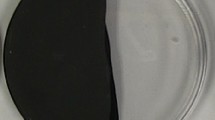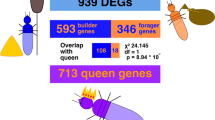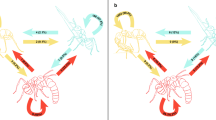Abstract
The red imported fire ant Solenopsis invicta is an invasive pest in the USA, eastern Asia, and Australia that causes billions worth of damage where it has been introduced. In the insect colony, workers perform tasks based on their age as well as the subcaste, where the younger workers tend to remain in the nest and tend to the brood while the older workers leave the nest to perform activities such as foraging. In eusocial insects, juvenile hormone has been identified to be a catalyst for behavioral changes among the worker caste, but the involvement of this hormone in S. invicta task allocation has not been investigated. Here, we conducted RNA-seq analyses to identify genes associated with worker division of labor. We compared the expression profiles of foragers and nurses and found 816 differentially expressed genes. We also identified 100 differentially expressed genes between nurses treated with acetone and nurses treated with a juvenile hormone analog. For this study, we focused on the differentially expressed genes between foragers and nurses that were associated with energy metabolism, glycolysis, juvenile hormone synthesis, metabolism, and immunity because these pathways have been identified as differentially expressed between foragers and nurses in different social insects. We also identified changes in gene expression induced by the juvenile hormone analog, some of which were as expected if the juvenile hormone is involved in regulating the shift from nursing to foraging in S. invicta workers. Overall, our results support a potential role of juvenile hormone in S. invicta task transition probably in association with other factors such as insect age or nutritional status which were not controlled in this experiment.




Similar content being viewed by others
Data availability
The Illumina reads can be found at NCBI's Gene Expression Omnibus (GEO) from the accession Series GSE229201. All other data generated or analyzed during this study are included in this published article.
References
Alipour H, Shahriari-Namadi M, Ebrahimi S, Moemenbellah-Fard MD (2020) Wound healing potential: evaluation of molecular profiling and amplification of Lucilia sericata angiopoietin-1 mRNA mid-part. BMC Res Notes 13:1–7
Amdam GV, Aase ALTO, Seehuus SC, Fondrk MK, Norberg K, Hartfelder K (2005) Social reversal of immunosenescence in honey bee workers. Exp Gerontol 40:939–947. https://doi.org/10.1016/j.exger.2005.08.004
Ament SA, Corona M, Pollock HS, Robinson GE (2008) Insulin signaling is involved in the regulation of worker division of labor in honey bee colonies. Proc Natl Acad Sci 105:4226–4231
Ament SA, Wang Y, Robinson GE (2010) Nutritional regulation of division of labor in honey bees: toward a systems biology perspective. Wiley Interdiscip Rev Syst Biol Med 2:566–576
Ament SA, Velarde RA, Kolodkin MH, Moyse D, Robinson GE (2011) Neuropeptide Y-like signalling and nutritionally mediated gene expression and behaviour in the honey bee. Insect Mol Biol 20:335–345
Amsalem E, Malka O, Grozinger C, Hefetz A (2014) Exploring the role of juvenile hormone and vitellogenin in reproduction and social behavior in bumble bees. BMC Evol Biol 14:45
Arrese EL, Soulages JL (2010) Insect fat body: energy, metabolism, and regulation. Annu Rev Entomol 55:207–225
Ascunce MS, Yang C-C, Oakey J, Calcaterra L, Wu W-J, Shih C-J, Goudet J, Ross KG, Shoemaker D (2011) Global invasion history of the fire ant Solenopsis invicta. Science 331:1066–1068
Azevedo DO, de Paula SO, Zanuncio JC, Martinez LC, Serrão JE (2016) Juvenile hormone downregulates vitellogenin production in Ectatomma tuberculatum (Hymenoptera: Formicidae) sterile workers. J Exp Biol 219:103–108
Becker ASP, Steele JE, Wegener G (1996) The regulation of trehalose metabolism in insects. Experimentia 5:433–439
Bellés X, Martín D, Piulachs M-D (2005) The mevalonate pathway and the synthesis of juvenile hormone in insects. Annu Rev Entomol 50:181–199
Berenbaum MR, Johnson RM (2015) Xenobiotic detoxification pathways in honey bees. Curr Opin Insect Sci 10:51–58
Bergé J, Feyereisen R, Amichot M (1998) Cytochrome P450 monooxygenases and insecticide resistance in insects. Philos Trans R Soc Lond Ser B: Biol Sci 353:1701–1705
Bernadou A, Busch J, Heinze J (2015) Diversity in identity: behavioral flexibility, dominance, and age polyethism in a clonal ant. Behav Ecol Sociobiol 69:1365–1375
Bernadou A, Hoffacker E, Pable J, Heinze J (2020) Lipid content influences division of labour in a clonal ant. J Exp Biol 223:jeb219238
Beshers SN, Fewell JH (2001) Models of division of labor in social insects. Annu Rev Entomol 46:413–440
Bomtorin AD, Mackert A, Rosa GCC, Moda LM, Martins JR, Bitondi MMG, Hartfelder K, Simões ZLP (2014) Juvenile hormone biosynthesis gene expression in the corpora allata of honey bee (Apis mellifera L) female castes. PLoS ONE 1:e86923
Calkins TL, Chen ME, Arora AK, Hawkings C, Tamborindeguy C, Pietrantonio PV (2018) Brain gene expression analyses in virgin and mated queens of fire ants reveal mating-independent and socially regulated changes. Ecol Evol 8:4312–4327. https://doi.org/10.1002/ece3.3976
Cassill DL, Tschinkel WR (1999) Task selection by workers of the fire ant Solenopsis invicta. Behav Ecol Sociobiol 45:301–310
Castillo P, Pietrantonio PV (2013) Differences in sNPF receptor-expressing neurons in brains of fire ant (Solenopsis invicta Buren) worker subcastes: indicators for division of labor and nutritional status? PLoS ONE 8(12):e83966
Cheng D, Zhang Z, He X, Liang G (2013) Validation of reference genes in Solenopsis invicta in different developmental stages, castes and tissues. PLoS ONE 8:e57718
Chiou S-J, Broeck JV, Janssen I, Borovsky D, Vandenbussche F, Simonet G, De Loof A (1998) Cloning of the cDNA encoding Scg-SPRP, an unusual Ser-protease-related protein from vitellogenic female desert locusts (Schistocerca gregaria). Insect Biochem Mol Biol 28:801–808
Cornette R, Gotoh H, Koshikawa S, Miura T (2008) Juvenile hormone titers and caste differentiation in the damp-wood termite Hodotermopsis sjostedti (Isoptera, Termopsidae). J Insect Physiol 54(6):922–930
Corona M, Velarde RA, Remolina S, Moran-Lauter A, Wang Y, Hughes KA, Robinson GE (2007) Vitellogenin, juvenile hormone, insulin signaling, and queen honey bee longevity. Proc Natl Acad Sci 104:7128–7133
Cremer S, Armitage SA, Schmid-Hempel P (2007) Social immunity. Curr Biol 17:R693–R702
Cremer S, Pull CD, Fuerst MA (2018) Social immunity: emergence and evolution of colony-level disease protection. Annu Rev Entomol 63:105–123
Daugherty T, Toth A, Robinson G (2011) Nutrition and division of labor: effects on foraging and brain gene expression in the paper wasp Polistes metricus. Mol Ecol 20:5337–5347
Dhar MK, Koul A, Kaul S (2013) Farnesyl pyrophosphate synthase: a key enzyme in isoprenoid biosynthetic pathway and potential molecular target for drug development. New Biotechnol 30:114–123
Edwards J (1975) The effects of a juvenile hormone analogue on laboratory colonies of pharaoh’s ant, Monomorium pharaonis (L.) (Hymenoptera, Formicidae). Bull Entomol Res 65:75–80
Feyereisen R (1999) Insect P450 enzymes. Annu Rev Entomol 44:507–533
Feyereisen R (2006) Evolution of insect P450. Portland Press Ltd
García-Robles I, De Loma J, Capilla M, Roger I, Boix-Montesinos P, Carrión P, Vicente M, López-Galiano MJ, Real MD, Rausell C (2020) Proteomic insights into the immune response of the Colorado potato beetle larvae challenged with Bacillus thuringiensis. Dev Comp Immunol 104:103525
Hawkings C (2018) The role of gene expression in task regulation of the worker caste of the red imported fire ant (Solenopsis invicta, Buren). Ph.D., Entomology. College Station, TX, Texas A&M University
Hawkings C, Tamborindeguy C (2018) Expression analysis of vitellogenins in the workers of the red imported fire ant (Solenopsis invicta). PeerJ 6:e4875
Hawkings C, Calkins TL, Pietrantonio PV, Tamborindeguy C (2019) Caste-based differential transcriptional expression of hexamerins in response to a juvenile hormone analog in the red imported fire ant (Solenopsis invicta). PLoS ONE 14:e0216800
Hlavica P (2011) Insect cytochromes P450: topology of structural elements predicted to govern catalytic versatility. J Inorg Biochem 105:1354–1364
Iga M, Kataoka H (2012) Recent studies on insect hormone metabolic pathways mediated by cytochrome P450 enzymes. Biol Pharm Bull 35:838–843
Ingram KK, Oefner P, Gordon DM (2005) Task-specific expression of the foraging gene in harvester ants. Mol Ecol 3:813–818
Jaycox ER (1976) Behavioral changes in worker honey bees (Apis mellifera L) after injection with synthetic juvenile hormone (Hymenoptera: Apidae). J Kansas Entomol Soc 49:165–170
Jindra M, Bittova L (2020) The juvenile hormone receptor as a target of juvenoid “insect growth regulators.” Arch Insect Biochem Physiol 103:e21615
Jindra MPS, Riddiford LM (2013) The juvenile hormone signaling pathway in insect development. Ann Rev Entomol 7:181–204
Jones JC, Oldroyd BP (2006) Nest thermoregulation in social insects. Adv Insect Physiol 33:153–191
Joynson R (2015) Tuxedo suite PE up to 4 conditions, https://cyverse.org/
Kadochová Š, Frouz J (2014) Thermoregulation strategies in ants in comparison to other social insects, with a focus on red wood ants (Formica rufa group). F1000Research 2:280
Kensuke N (1995) Age polyethism, idiosyncrasy and behavioural flexibility in the queenless ponerine ant, Diacamma sp. J Ethol 13:113–123
Lengyel F, Westerlund SA, Kaib M (2007) Juvenile hormone III influences task-specific cuticular hydrocarbon profile changes in the ant Myrmicaria eumenoides. J Chem Ecol 33:167–181
Liu Y, Sui YP, Wang JX, Zhao XF (2009) Characterization of the trypsin-like protease (Ha-TLP2) constitutively expressed in the integument of the cotton bollworm, Helicoverpa armigera. Arch Insect Biochem Physiol 72:74–87
Lund J (2023) Calculation of the representation factor and the associated probability. http://nemates.org/MA/progs/overlap_stats.html
Maisonnasse A, Lenoir J-C, Beslay D, Crauser D, Le Conte Y (2010) E-β-ocimene, a volatile brood pheromone involved in social regulation in the honey bee colony (Apis mellifera). PLoS ONE 5:e13531
Manfredini F, Lucas C, Nicolas M, Keller L, Shoemaker D, Grozinger CM (2014) Molecular and social regulation of worker division of labour in fire ants. Mol Ecol 23:660–672
Mao W, Schuler M, Berenbaum M (2015) Task-related differential expression of four cytochrome P450 genes in honeybee appendages. Insect Mol Biol 24:582–588
Merchant N, Lyons E, Goff S, Vaughn M, Ware D, Micklos D, Antin P (2016) The iPlant collaborative: cyberinfrastructure for enabling data to discovery for the life sciences. PLoS Biol 14:e1002342
Mirenda JT, Vinson SB (1981) Division of labour and specification of castes in the red imported fire ant Solenopsis invicta Buren. Anim Behav 29:410–420
Miyamoto T, Amrein H (2017) Gluconeogenesis: an ancient biochemical pathway with a new twist. Fly 11:218–223
Nijhout HF, Wheeler DE (1982) Juvenile hormone and the physiological basis of insect polymorphisms. Q Rev Biol 57:109–133
Norman VC, Hughes WO (2016) Behavioural effects of juvenile hormone and their influence on division of labour in leaf-cutting ant societies. J Exp Biol 219:8–11
Pankiw T (2004) Brood pheromone regulates foraging activity of honey bees (Hymenoptera : Apidae). J Econ Entomol 97:748–751. https://doi.org/10.1603/0022-0493(2004)097[0748:Bprfao]2.0.Co;2
Qiu HL, Zhao CY, He YR (2017) On the molecular basis of division of labor in Solenopsis invicta (Hymenoptera: Formicidae) workers: RNA-seq analysis. J Insect Sci. https://doi.org/10.1093/jisesa/iex002
Raudvere U, Kolberg L, Kuzmin I, Arak T, Adler P, Peterson H, Vilo J (2019) g:Profiler: a web server for functional enrichment analysis and conversions of gene lists (2019 update). Nucleic Acids Res 47:W191–W198
Rembold H, Czoppelt C, Rao P (1974) Effect of juvenile hormone treatment on caste differentiation in the honeybee, Apis mellifera. J Insect Physiol 20:1193–1202
RKS (2000) Energy metabolism during insect flight: biochemical design and physiological performance. Physiol Biochem Zool 6:765–771
Robinson GE (1992) Regulation of division of labor in insect societies. Annu Rev Entomol 37:637–665
Schmittgen TD, Livak KJ (2008) Analyzing real-time PCR data by the comparative CT method. Nat Protoc 3:1101–1108
Scott JG, Wen Z (2001) Cytochromes P450 of insects: the tip of the iceberg. Pest Manag Sci 57:958–967
Seeley TD (1982) Adaptive significance of the age polyethism schedule in honeybee colonies. Behav Ecol Sociobiol 4:287–293
Sen SE, Trobaugh C, Béliveau C, Richard T, Cusson M (2007) Cloning, expression and characterization of a dipteran farnesyl diphosphate synthase. Insect Biochem Mol Biol 37:1198–1206
Shakeel M, Xu X, De Mandal S, Jin F (2019) Role of serine protease inhibitors in insect-host-pathogen interactions. Arch Insect Biochem Physiol 102:e21556
Silberman RE, Gordon D, Ingram K (2016) Nutrient stores predict task behaviors in diverse ant species. Insectes Soc 63:299–307
Spit J, Holtof M, Badisco L, Vergauwen L, Vogel E, Knapen D, Vanden Broeck J (2016) Transcriptional analysis of the adaptive digestive system of the migratory locust in response to plant defensive protease inhibitors. Sci Rep 6:1–15
Starkey J, Brown A, Amsalem E (2019) The road to sociality: brood regulation of worker reproduction in the simple eusocial bee Bombus impatiens. Anim Behav 154:57–65
Starkey J, Hawkings C, Tamborindeguy C (2023) Influence of juvenile hormone analog on behavior in the red imported fire ant Solenopsis invicta. Sci Rep 13:14726. https://doi.org/10.1038/s41598-023-41540-4
Sui YP, Wang JX, Zhao XF (2009) The impacts of classical insect hormones on the expression profiles of a new digestive trypsin-like protease (TLP) from the cotton bollworm, Helicoverpa armigera. Insect Mol Biol 18:443–452
Sullivan JP, Jassim O, Fahrbach SE, Robinson GE (2000) Juvenile hormone paces behavioral development in the adult worker honey bee. Horm Behav 37(1):1–14
Taban AH, Tittiger C, Blomquist GJ, Welch WH (2009) Isolation and characterization of farnesyl diphosphate synthase from the cotton boll weevil, Anthonomus grandis. Arch Insect Biochem Physiol 71:88–104
Tobback J, Mommaerts V, Vandersmissen HP, Smagghe G, Huybrechts R (2011) Age-and task-dependent foraging gene expression in the bumblebee Bombus terrestris. Arch Insect Biochem Physiol 1:40–42
Toth AL (2017) To reproduce or work? Insect castes emerge from socially induced changes in nutrition-related genes. Mol Ecol 26:2839–2841. https://doi.org/10.1111/mec.14076
Toth AL, Robinson GE (2005) Worker nutrition and division of labour in honeybees. Anim Behav 69:427–435
Trapnell C, Roberts A, Goff L, Pertea G, Kim D, Kelley DR, Pimentel H, Salzberg SL, Rinn JL, Pachter L (2012) Differential gene and transcript expression analysis of RNA-seq experiments with TopHat and Cufflinks. Nat Protoc 7:562–578
Tripet F, Nonacs P (2004) Foraging for work and age-based polyethism: the roles of age and previous experience on task choice in ants. Ethology 110:863–877
Tunaz H, Uygun N (2004) Insect growth regulators for insect pest control. Turk J Agric For 28:377–387
Vannette RL, Mohamed A, Johnson BR (2015) Forager bees (Apis mellifera) highly express immune and detoxification genes in tissues associated with nectar processing. Sci Rep 5:16224
Vargo EL (1998) Primer pheromones in ants. Pheromone communication in social insects: ants, wasps, bees, and termites. CRC Press, pp 293–313
Walker TN, Hughes WO (2009) Adaptive social immunity in leaf-cutting ants. Biol Let 5(4):446–448
Wilson EO (1978) Division of labor in fire ants based on physical castes (Hymenoptera: Formicidae: Solenopsis). J Kansas Entomol Soc 51:615–636
Zhang C, Zhou D, Zheng S, Liu L, Tao S, Yang L, Hu S, Feng Q (2010) A chymotrypsin-like serine protease cDNA involved in food protein digestion in the common cutworm, Spodoptera litura: cloning, characterization, developmental and induced expression patterns, and localization. J Insect Physiol 56:788–799
Zhang Z, Yan J, Liu Q, Zhang Y, Gong J, Hou Y (2019) Genome-wide analysis and hormone regulation of chitin deacetylases in silkworm. Int J Mol Sci 20:1679
Zhou L-T, Jia S, Wan P-J, Kong Y, Guo W-C, Ahmat T, Li G-Q (2013) RNA interference of a putative S-adenosyl-l-homocysteine hydrolase gene affects larval performance in Leptinotarsa decemlineata (Say). J Insect Physiol 59:1049–1056
Acknowledgements
This work was supported by Texas A&M University, Texas A&M AgriLife Research, Texas Invasive Ant Research; the National Institute of Food and Agriculture, Hatch project TEX0-1-9381; the National Pest Management Association via the Pest Management Foundation Scholarship; the J.H. Benedict, Sr. Memorial Graduate Student Scholarship; and the Dr. Roger E. Gold Endowed Graduate Scholarship. The authors thank the Agriculture Women Excited to Share Opinions, Mentoring and Experiences (AWESOME) faculty group of the College of Agriculture and Life Sciences at Texas A&M University for assistance with editing the manuscript.
Author information
Authors and Affiliations
Corresponding author
Ethics declarations
Conflict of interest
The authors have no competing interests to declare.
Supplementary Information
Below is the link to the electronic supplementary material.
Rights and permissions
Springer Nature or its licensor (e.g. a society or other partner) holds exclusive rights to this article under a publishing agreement with the author(s) or other rightsholder(s); author self-archiving of the accepted manuscript version of this article is solely governed by the terms of such publishing agreement and applicable law.
About this article
Cite this article
Starkey, J., Tamborindeguy, C. Molecular mechanisms of task allocation in workers of the red imported fire ant, Solenopsis invicta. Insect. Soc. 70, 475–486 (2023). https://doi.org/10.1007/s00040-023-00939-y
Received:
Revised:
Accepted:
Published:
Issue Date:
DOI: https://doi.org/10.1007/s00040-023-00939-y




